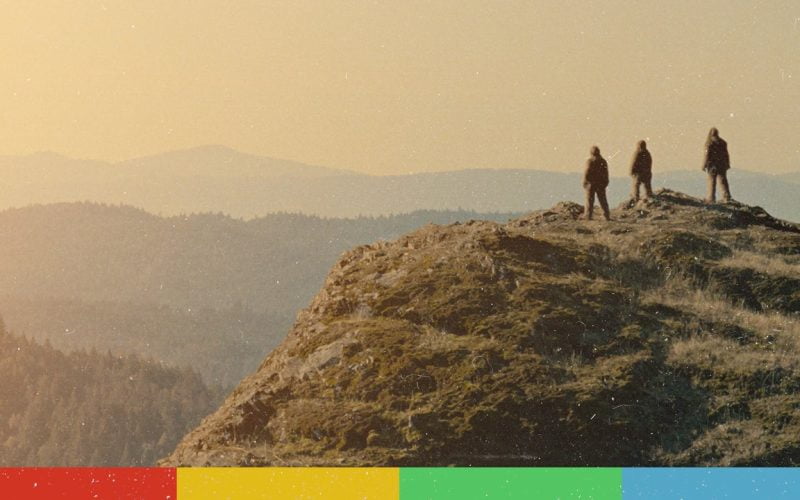This review is based on a screening at the 2024 Sundance Film Festival.
Impressions of Sasquatch Sunset
I waited two days, sat through three other movies (good ones, too) and challenged two colleagues to talk me out of this, but here I am still thinking about Sasquatch Sundance and ready to tell you that it’s a masterpiece. From writer/director brothers David and Nathan Zellner, the film follows a family of sasquatches over the course of a year in their lives. If that premise sounds too silly to be taken seriously… good. That’s part of the point.
Starring Riley Keough and Jesse Eisenberg underneath layers of great looking prosthetics, Sasquatch Sunset is a mix of everything on the spectrum from raunchy comedy to tragic loss. It’s an avant-garde experiment told completely in the grunting language of primitive missing links. That the early returns out of Sundance are polarizing is not surprising. It has the feel of a movie you’ll need to talk someone into going to see and that is, frankly, one of the most exciting things about Sasquatch Sunset.
The Emotional Depth of Sasquatch Sunset
The film opens with meandering, slice-of-life vignettes. The cryptids eat and argue and build shelters and get horny, all the while developing each character with legitimate care. The Zellners do not treat these creatures as caricatures. Instead, they communicate sweet innocence, jealousy, and, of course, a fair amount of stupidity. While the first act of the film revels in shit, fart, and sex jokes, the entire production, cast included, is so thoroughly committed to caring about these sasquatch that you can’t help but be absorbed by their lives as well.
Keough, the only woman in the cast, is particularly great at this. Yes, she scratches her crotch and smells it. A lot. But beyond that, she manages to also portray a mother who cares for her children, a creature enduring through tragedy. Meanwhile, the adolescent in the family, played by Christophe Zajac-Denek, has an imaginary friend that speaks through his hand in a higher pitched grunt than his normal vocalization while also worrying about his mother’s emotional well-being.
There’s also a legitimate sadness at play throughout the film. The family is lonely and increasingly more aware that there might not be anymore of them out there. And what could’ve easily been a chance to make fun of the primitive protagonists and their endless wandering is treated with respect and empathy instead. These sasquatch, for all the gross, fluid-based jokes they give us, are never treated like anything less than whole characters.
The Cinematography of Sasquatch Sunset
That the basic idea of the film is so absurd, so intentionally eccentric, and the Zellners are still able to pull things like that off is the true brilliance of the team behind Sasquatch Sunset and this includes the cinematography. The film is gorgeously shot by Mike Gioulakis, a cinematographer with titles like It Follows and Us on his resume. Beautiful landscapes that range from sunny spring time to snow covered mountains keep nature front and center, while long lens close ups live on the desperation of Keough’s eyes. In short, the craft to pull off such a bonkers concept, much less make it, in part, a relatable drama, is fully on display and incredible.
But this brings me back to the beginning of the review. Part of the point of Sasquatch Sunset is to be challenging, to make the audience take it seriously. There’s no doubt it was an experiment, and regardless of what you think of experimental film, this particular example is a masterpiece of the genre.
